Piecemeal implementation and unequal emphasis on the reduction of hazardous substances in the economy versus the identification and adoption of safer alternatives does not lead to optimal policy outcomes.
– Rudisill et al. IEAM, 2023
Regulatory assessments that directly address or restrict the use hazardous chemicals are falling short of getting us to safer, according Safer Chemistry Advisory’s Cathy Rudisill’s recently published peer-reviewed journal article. Her co-authors spanned academia, government, and consulting.
Based on key lessons learned gathered and collated from numerous discussions with a wider group of experts, the authors generated five recommendations that can help to improve the impact of regulatory policies incorporating chemical alternatives assessment into their frameworks. These lessons and recommendations were explored through the lens of case studies like REACH Authorizations, California’s Safer Consumer Products Program, EPA SNAP, and the more recent Safer Products for Washington.
While all of these programs require the assessment alternatives to some degree, only the EPA SNAP program mandates the use of safer alternatives. This is important as regrettable substitutions generated from regulatory mandates as been well documented. In the EU, it was recently reported that REACH’s authorization of trichloroethylene in metal finishing resulted in most users switching to perchloroethylene (a suspected neurotoxicant and probable carcinogen), despite the fact that better alternatives had been adopted by others.
The five recommendations include: establishing clear decision rules, explicitly enforcing or incentivizing the adoption of safer alternatives (not just the restriction of the hazardous substance), providing adequate funding and authority to responsible agencies, incorporating stakeholder engagement throughout the process (not just to approve a final version), and creating a third-party organization to standardize the practice.
Read the full open access article at: https://doi.org/10.1002/ieam.4826
